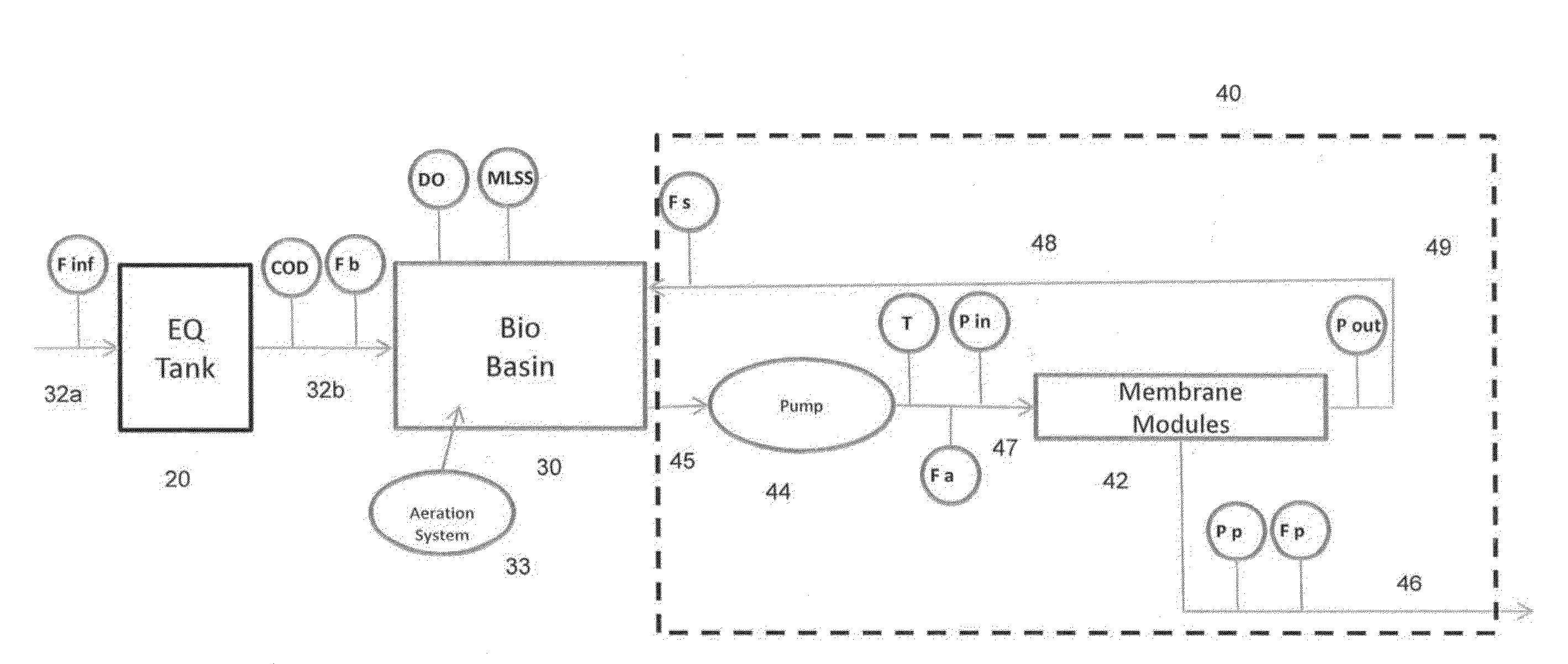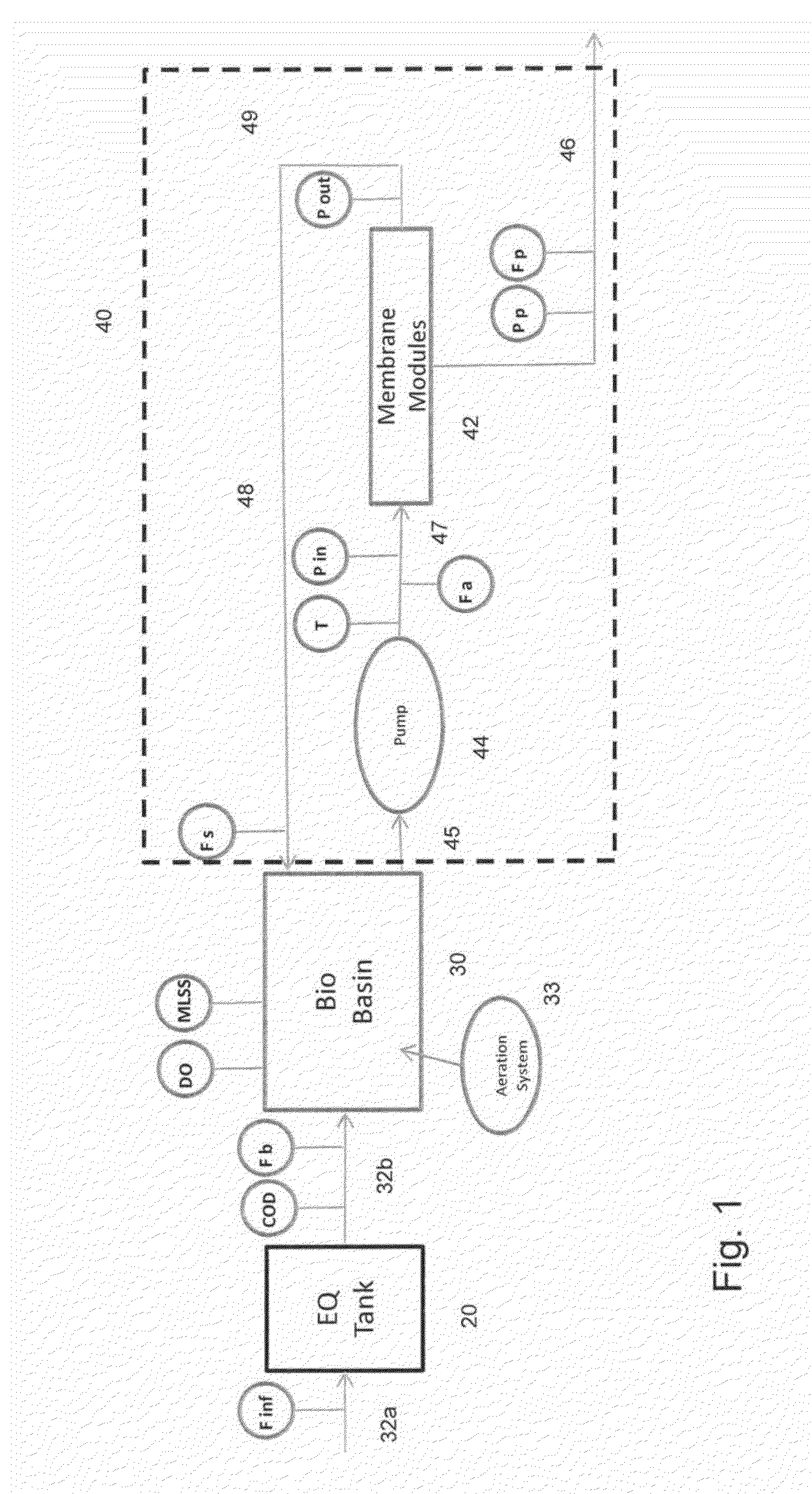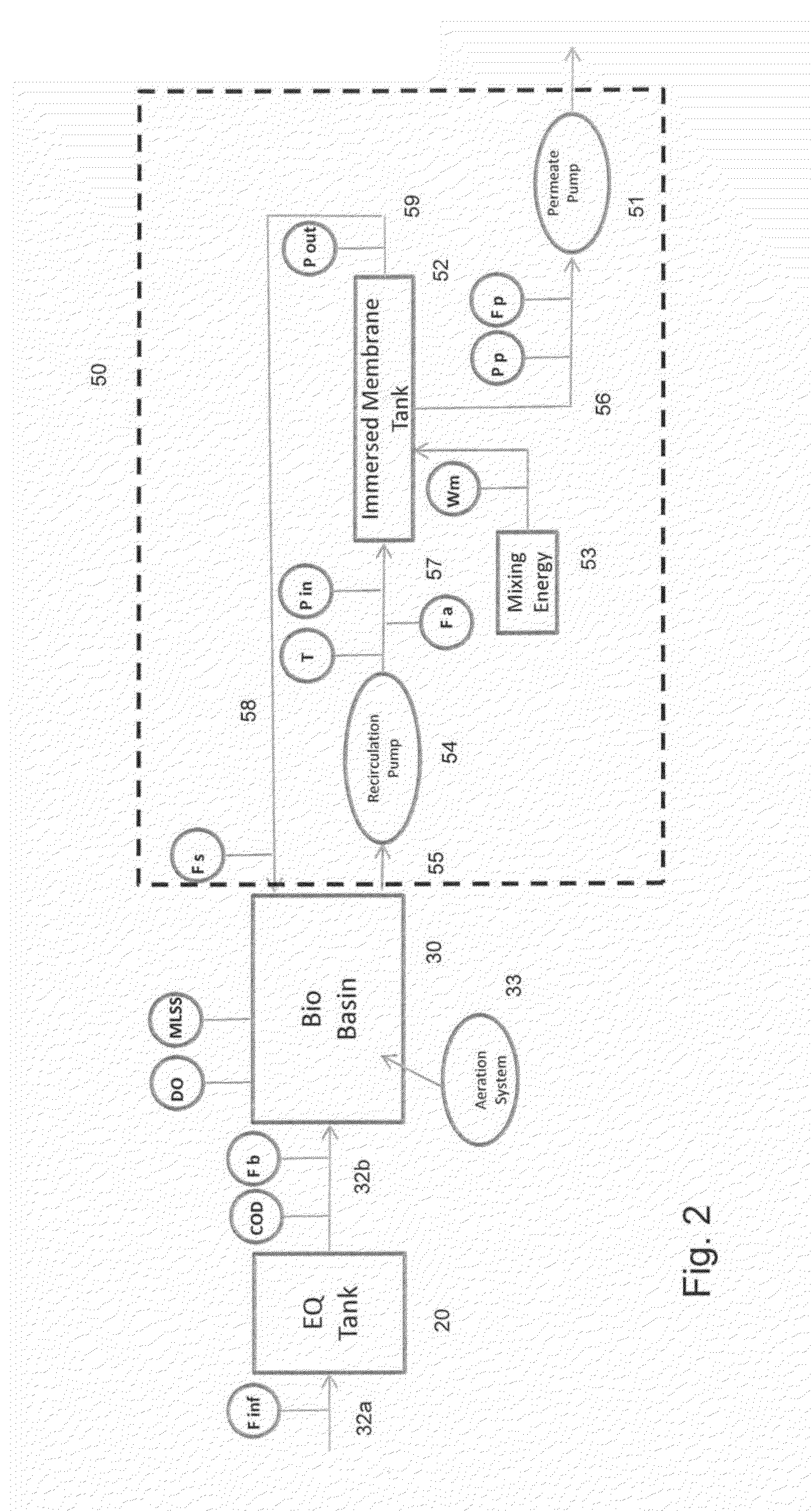Advanced control system for wastewater treatment plants with membrane bioreactors
a technology of membrane bioreactors and wastewater treatment plants, which is applied in the direction of water treatment parameter control, sustainable biological treatment, biological water/sewage treatment, etc., can solve the problems of energy consumption, overall energy consumption and operating costs, and does little to control or optimize the flow within the mbr system or the overall wastewater treatment process
- Summary
- Abstract
- Description
- Claims
- Application Information
AI Technical Summary
Benefits of technology
Problems solved by technology
Method used
Image
Examples
Embodiment Construction
Wastewater Treatment Plant Parameters and Measurement Techniques
[0015]Turning to FIG. 1, there is shown a high level schematic representation of the biological systems within a wastewater treatment plant having an external membrane bioreactor (eMBR) system. FIG. 1 shows a simplified representation of an activated sludge process employing an equalization tank 20 feeding wastewater into an aeration or biological basis 30, an aeration system 33 to inject high purity oxygen (HPG) or air into the aeration basin, and an membrane bioreactor (MBR) system 40 including a plurality of membrane modules 42, a MBR pump 44, a MBR intake conduit 46, and a recycle conduit 48. The illustrated system, includes an influent stream 32a, 32b directed to the equalization tank 20 and then to the biological basin 30. A portion of the wastewater in the biological basin 30 is diverted as an MBR stream 45 via the MBR pump 44 to the membrane modules 42. The sludge stream 49 exiting the MBR system 40 is recycled ...
PUM
| Property | Measurement | Unit |
|---|---|---|
| temperature | aaaaa | aaaaa |
| flow rate | aaaaa | aaaaa |
| pressure | aaaaa | aaaaa |
Abstract
Description
Claims
Application Information
 Login to View More
Login to View More - R&D
- Intellectual Property
- Life Sciences
- Materials
- Tech Scout
- Unparalleled Data Quality
- Higher Quality Content
- 60% Fewer Hallucinations
Browse by: Latest US Patents, China's latest patents, Technical Efficacy Thesaurus, Application Domain, Technology Topic, Popular Technical Reports.
© 2025 PatSnap. All rights reserved.Legal|Privacy policy|Modern Slavery Act Transparency Statement|Sitemap|About US| Contact US: help@patsnap.com



